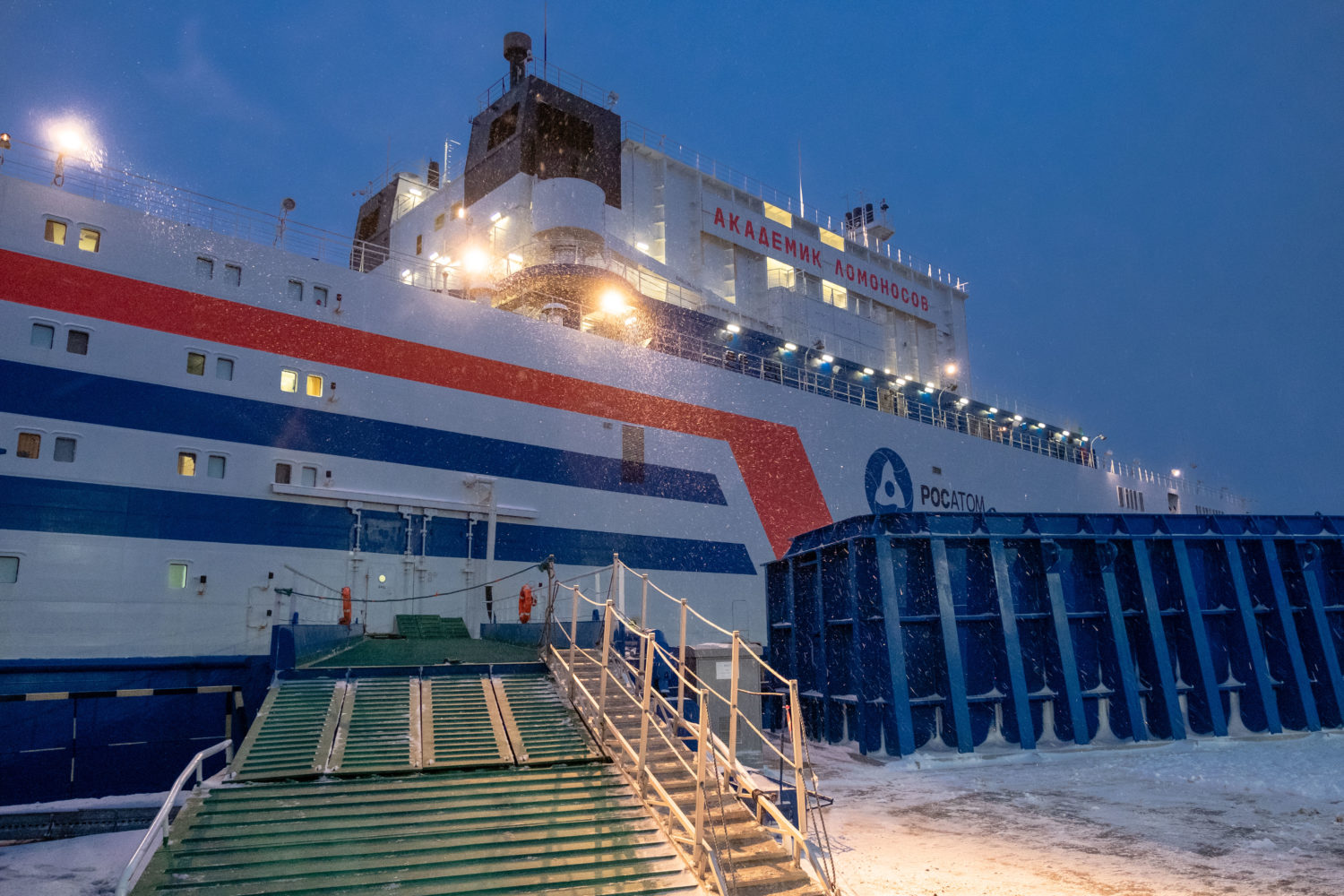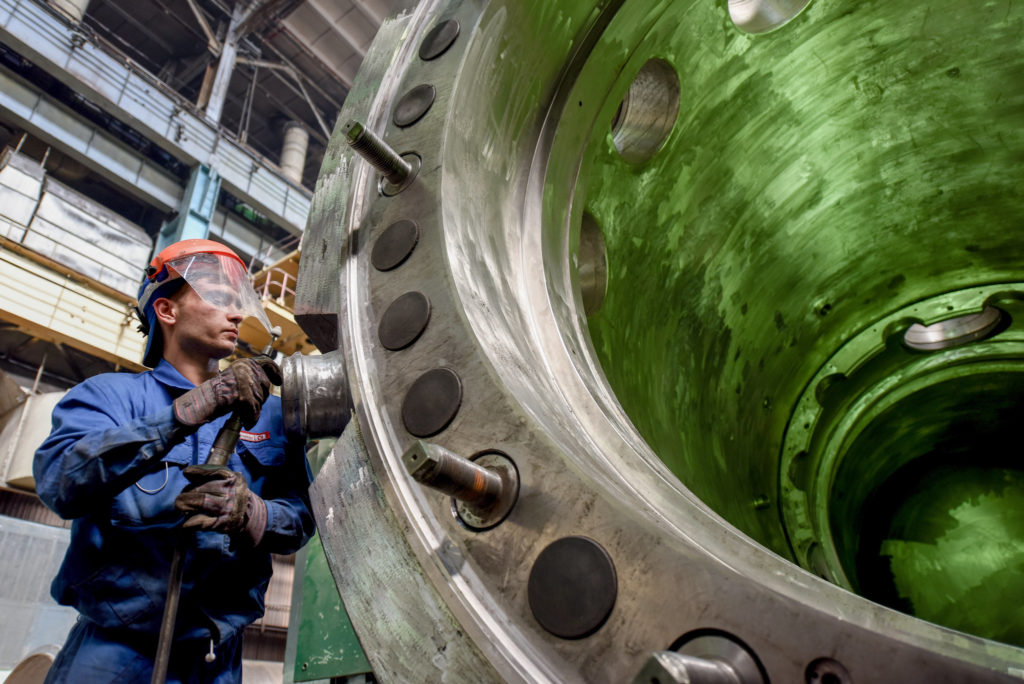
Small Reactor, Large Benefit
back to contentsSmall modular reactors excited much interest at the Russian Energy Week (REW) international forum. Four most feasible arguments voiced for SMRs were long-term predictability of prices, sustainability, relatively low capital expenditures, and efficiency in hydrogen production. Rosatom is currently working on its new project to build floating power reactors for Baimsky GOK.
“We are satisfied to be finally heard. This is really good news that nuclear energy has been mentioned in favorable terms over the last weeks. The trend is clear: everyone needs a safe, stable and reliable energy system. No less important are energy prices and the possibility of predicting them, as well as its sustainability,” Rosatom Director General Alexey Likhachev said at the REW.
His belief that nuclear power is essential for the zero-carbon future is based on facts and figures. In 2020, renewable sources of energy accounted for 45 % of the German energy mix and 25 % in France. The share of nuclear power is 11 % in Germany and almost 70 % in France. Germany produced 617 million tons of carbon dioxide equivalent (a unit of measurement that is used to standardize the climate effects of various greenhouse gases) in 2020, while France produced 272 million tons of CO2 eq over the same period. All despite the fact that Germany generated 60.9 TWh of electricity in 2020, and France 379.5 TWh. “We should shift from statements and proclamations to figures in solving environmental problems,” Alexey Likhachev called on the audience.
Nuclear power benefits for consumers were also proved by figures. According to Rosatom’s Director General, Baimsky GOK, a mining and processing plant that will develop one of Russia’s largest gold and copper deposits Peschanka, will pay about RUB6 (USD 0.08) per kilowatt-hour of electricity. “I think the solution is just brilliant. At first, we considered two options — either a gas-fueled power station or a floating nuclear power plant. And never for a moment did I doubt, especially considering the current situation on the gas market, that we were absolutely right in choosing nuclear. We need a long-term guarantee of flat prices. I am sure that what we do in partnership with Rosatom will be one of the most technologically advanced solutions worldwide,” said Oleg Novachuk, Chairman of the Board of KAZ Minerals, which owns the Baimsky GOK. It is also important that copper and gold produced by Baimsky will not be subject to the carbon tax thanks to carbon-free nuclear generation. “Exploration of remote regions will not be possible without floating nuclear power plants,” Oleg Novachuk concluded confidently.
Rosatom will construct four upgraded floating nuclear power units for Baimsky GOK. Their service life will be 40 years, with a possibility of extension. A RUB190.2bn contract to this effect between AtomEnergoMash and Atomflot (both are subsidiaries of Rosatom) was signed this October. The upgraded power units will have almost the same dimensions as the only one existing now, Akademik Lomonosov, but their reactors will be different. The 35 MWe reactor KLT 40 will be replaced with RITM 200S with a power capacity of 55 MWe. The turbine will also be more powerful. Unlike Akademik Lomonosov, the floating nuclear power units for Baimsky will not produce heat as it will not be needed. Besides, they will have a smaller crew compartment since some of the functions will be relocated onshore. Another difference is the upgraded floating power units will have no refueling area — their reactors will be refueled at Atomflot’s naval base in Murmansk in a manner similar to nuclear icebreakers.
Orders for key components have already been placed with manufacturers. OKBM Afrikantov (part of AtomEnergoMash) will produce eight reactors. Kirov Energomash (part of Kirov Plant Group) will produce eight steam turbines.
AtomEnergoMash will supply the first two floating power units to Atomflot by the end of 2026. The contract had to be fulfilled by July 31, 2031.
Onshore SMRs have no fewer advantages than floating ones. According to the head of the Republic of Sakha (Yakutia) Aysen Nikolaev, Yakutia despite being the largest Russian region had no district heating. Diesel generators remain the only source of electric power in many cities and towns, driving up electricity prices. For example, people living in the town of Belaya Gora pay more than RUB100 (USD 1.4) per kilowatt-hour, so local authorities seek every opportunity to cut electricity costs. “If we want to carry out large industrial projects here in the Arctic, where there is no power supply, nuclear stations seem to me to be the safest and most cost-efficient option,” Aysen Nikolaev stressed. “The price of electricity will be several times lower than now,” Alexey Likhachev confirmed.
In Yakutia, Rosatom will construct an onshore small nuclear plant with RITM 200 reactor to supply power to the Kyuchus gold mine during its commercial development. This sustainable source of energy will help overcome power shortage in the region, the head of Yakutia said.
Interest towards SMRs is growing. According to Mikhail Chudakov, IAEA Deputy Director General and Head of the Department of Nuclear Energy, many countries showed interest in SMRs after the first floating power plant Akademik Lomonosov was put in operation. SMRs are considered by island countries such as the Philippines, Malaysia and Indonesia. Small modular reactors do not require large initial investments into construction and electric power infrastructure. What is more, SMRs suit better to produce hydrogen by electrolysis than renewable energy sources proposed for this purpose. Nuclear power plants generate 75–80 times more energy than they consume, while solar farms produce only two times more. “Nuclear plants are best fit to make hydrogen, even by electrolysis,” Mikhail Chudakov pointed out.

AtomEnergoMash (AEM) is Rosatom’s power engineering division and one of Russia’s largest power machinery producers providing comprehensive solutions in design, manufacture and supply of machinery and equipment for nuclear, thermal, petroleum, shipbuilding and steel-making industries. Its production facilities are located in Russia, the Czech Republic, Hungary and other countries.




